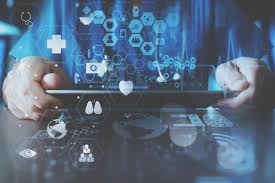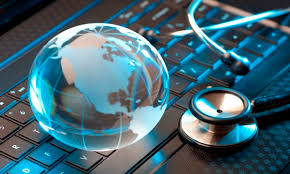
The term “health information technology” (health IT) refers to the
electronic systems health care professionals – and increasingly, patients
– use to store, share, and analyze health information. Health IT includes:
▪ Electronic health records (EHRs). EHRs allow doctors to better
keep track of your health information and may enable them to see
it when you have a problem even if their office is closed. EHRs also
make it easier for your doctor to share information with specialists,
so that specialists who need your information have it available when
it’s needed.
▪ Personal health records (PHRs). A PHR is a lot like an EHR,
except that you control what kind of information goes into it. You
can use a PHR to keep track of information from your doctor visits,
but the PHR can also reflect your life outside the doctor’s office and
your health priorities, such as tracking what you eat, how much you
exercise, and your blood pressure. Sometimes, your PHR can link
with your doctor’s EHR.
▪ Electronic prescribing (E-prescribing). A paper prescription can
get lost or misread. E-prescribing allows your doctor to communicate
directly with your pharmacy. This means you can go to the pharmacy
to pick up medicine without having to bring the paper prescription.
▪ Privacy and security. All of these electronic systems can increase
the protections of your health information. For example, electronic
information can be encrypted so that only authorized people can
read it. Health IT can also make it easier to record and track who
has accessed your information.
Benefits of HITECH

Faster, more accurate prescriptions: E-prescribing systems automatically send prescription orders to the pharmacy for
you so your medicine is ready for pickup when you arrive, saving you time. E-prescribing can also reduce the potential for
medication errors, such as those made by messy handwriting on a paper prescription.
▪ Rapid information sharing: When a provider adds patient notes or test results to your EHR, that information may be
available to the health care providers authorized to view your records, so that they can have access to the most up-to-date
information about your health. Some health care providers may allow you to access your own health information directly,
meaning you no longer have to wait to hear back from your doctor for information, such as test results.
▪ Reduced paperwork: As a patient, you have probably answered the same questions about personal information and
medical history dozens of times on seemingly identical forms. When health care providers share your electronic health
information, you may not need to write down the same facts repeatedly.
▪ Reduced unnecessary tests: Doctors sometimes order tests that you’ve had before simply because they do not have easy
access to prior test results. If all your test results are recorded in EHRs that can talk to each other, a health care provider
can see your prior test results that are available and order only truly necessary tests and procedures, saving time, money,
and discomfort while reducing risk.
▪ Better follow-up, better follow-through: Many EHRs incorporate reminder systems for both you and your doctor. For
example, some EHRs remind your doctor to follow up with you about ongoing health conditions or to offer you information
or services in response to changes in your health. At the same time, some EHRs can send you email or text message
reminders about making or keeping appointments, staying current with treatment and medications, and other ways to
improve your health.
▪ Secure access to information: In the event of a natural disaster or other tragedy, having your records in an EHR should
make it easier to reassemble your records, and to make them available to providers away from home, in the event that you
need to relocate temporarily or permanently. The Federal Government requires certified systems to meet certain security
standards so that professionals and others you designate can see only the information they need to manage your care
effectively; your State laws may require additional protections.
Drawbacks of HITECH

Expensive
An increasingly sophisticated health technology definitely does not come cheap. We have to understand that all first world national healthcare systems face a range of challenges; one of which is the ageing population. People are living longer. So what does this imply? This means an increased health needs but the working population generating income to pay for healthcare system is reduced. So one consideration would be, is the high cost which comes with high technology economically viable for the government?
Requires time to adapt fast
As we know, technology is constantly evolving. Many a time there will be new softwares, new upgrades, new way of doing things. In order to keep up with the competitive edge, hospital staff has to keep up with such changes. This can be a struggle for some, especially for the older staff.
Over-dependency on technology
While once the staff has adapted to the new way of work, there comes the next problem. It is not uncommon for a computer system to face technical errors. The health care informatics system is no exception. This problem is especially crucial in the Accident & Emergency (A&E) Department. Various departments in the hospital are interconnected by a common information system. When 1 department is down, others are affected. For example, a patient was rushed into the A&E Department. When there is an error while retrieving blood analysis information, the rest of the procedures following it will be delayed. This will cause huge inconveniences, or worse; it may even have adverse effects in the patient’s health condition.
Susceptible to network hackers
Patients’ medical history and other health information should be kept confidential for ethical and legal reasons. While the health care system network is definitely equipped with security measures, it is not impossible for network hacking to occur. Hence, this is certainly a vulnerability of Health Informatics.
